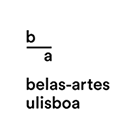Nicholas J. Wade

Seeing with two eyes and hearing with two ears
- University of Dundee, UK
- October 28th, Belas-Artes Auditorium
Stereo immersion in seeing and hearing is the normal condition of perception: objects are seen in depth and sounds are heard in space but these have not been the historical issues addressed. The unity of perceptual experience has masked attention to differences in the stimuli available to two eyes and two ears and to the ways in which they are processed. Contemporary approaches to stereo immersion are concerned with how the natural binocular and binaural processes can be simulated. Phenomena involving seeing with two eyes have been commented upon for several thousand years whereas those about hearing with two ears are a much more recent. The history of research on binocular vision and binaural hearing is compared with respect to the singleness of the percept, experimental manipulations of dichoptic and dichotic stimuli, eye and ear dominance, spatial localization, and the instruments used to stimulate the paired organs. One of the principal phenomena that led to studies of dichotic hearing was dichoptic colour mixing. Direction and distance in visual localization were analyzed before those for auditory localization, partly due to difficulties in controlling the stimuli. Experimental investigations began in the 19th century with the invention of instruments like the stereoscope and pseudoscope, soon to be followed by their binaural equivalents, the stethophone and pseudophone.
Nick Wade received his BSc degree in psychology from the University of Edinburgh and his PhD from Monash University, Australia; his thesis was on vestibular-visual interaction. This was followed by a postdoctoral fellowship from the Alexander von Humboldt Stiftung, at the Max-Planck-Institute for Behavioural Physiology, Germany where he carried out experiments using a human centrifuge. His subsequent academic career has been at Dundee University, where he is now Emeritus Professor and is a Fellow of the Royal Society of Edinburgh.
His research interests are in the history of vision research, binocular and motion perception, and the interplay between visual science and art. The books written on these topics include: Art and Science of Visual Illusions (1982), Brewster and Wheatstone on Vision (1983), Visual Allusions: Pictures of Perception (1990), A Natural History of Vision (1998), Purkinje’s Vision. The Dawning of Neuroscience (2001), Destined for Distinguished Oblivion: The Scientific Vision of William Charles Wells (1757-1817) (2003), The Moving Tablet of the Eye: The Origins of Modern Eye Movement Research (2005), Perception and Illusion. Historical Perspectives (2005), Circles. Science, Sense and Symbol (2007), Galileo’s Visions: Piercing the Spheres of the Heavens by Eye and Mind (2014), and his most recent book is Art and Illusionists (2016).
Details of chapters and articles published since 2000 can be found here. Examples of his art can be found here and here.








